|
ALL
SAINT'S
CHURCH
LLANELLI
CARMARTHENSHIRE. WEST WALES
|

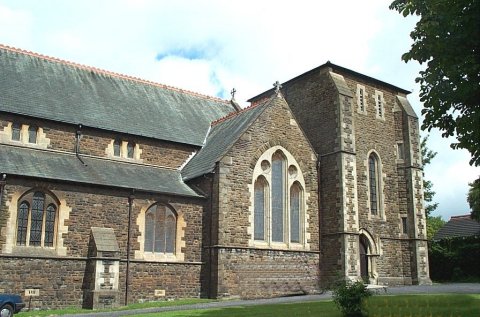 |
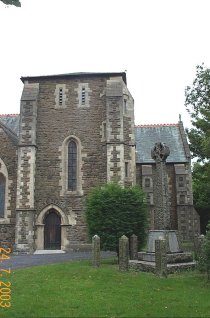 |
Note the unusual shallow pitch of the
roof covering the tower.
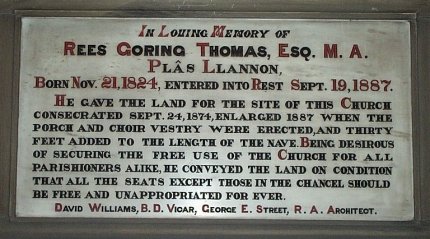 |
The church was erected circa.1872 when it is believed that a warm air stove system was installed in the church. Evidence of this can be seen in the furnace room where an old chimney flue has been bricked up, and also internal floor gratings. The church was enlarged in 1887 and this has to have been the time period when the Perkins HPHW heating system was installed to replace the warm air stove. This 5 circuit Perkins heating system is the largest system so far discovered by the Heritage Group. |
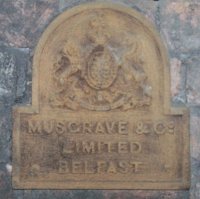
In this Welsh church for the first time the name of the original installer of the Perkins system has been found and identified.Their named wall plaque has been left fixed to the furnace wall.
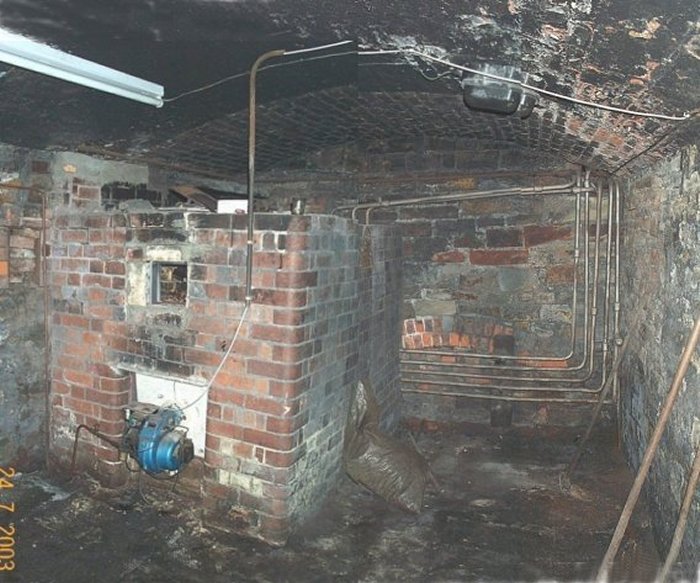 |
Brickwork
furnace now oil fired. Note
the 5 return pipework circuits.
The Perkins HPHW heating system is a 5 circuit system complete with its original solid fuel fired brickwork furnace which has now been converted to oil firing. The system has 3 expansion pipes fitted which are necessary to cope with the larger expansion volume of the heated water due to the long lengths of the pipework circuits.
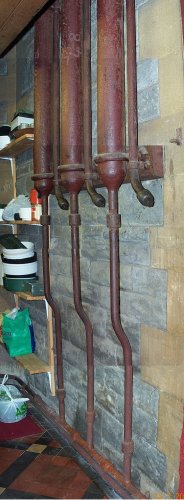 |
|
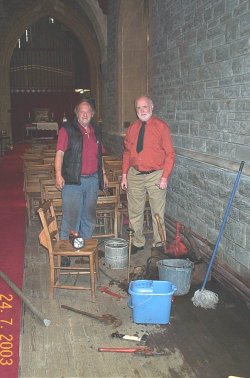 |
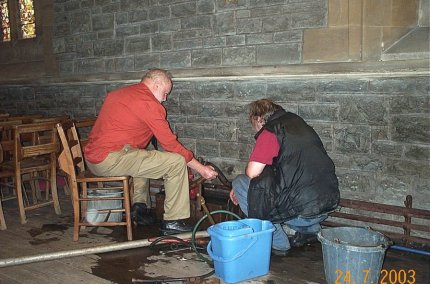 Maintenance engineers at work carrying out the flushing of the pipework |
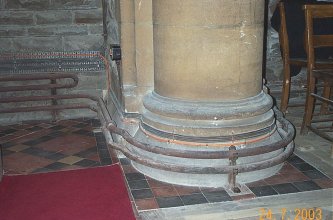 |
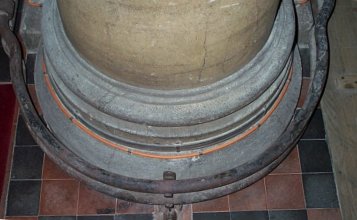 |
AUGUST 2003The skill and craftsmanship of the Victorian engineering Artisan can be readily illustrated in these two pictures which show a double row of pipework bent and formed to follow the radius of the circular column. The two pipes form a perfect semi-circle around the base of the column. This example becomes even more remarkable when we understand that it was fabricated without the help of hydraulic benders or electricity which was not yet available. All bends in pipework had to be hot forge formed.
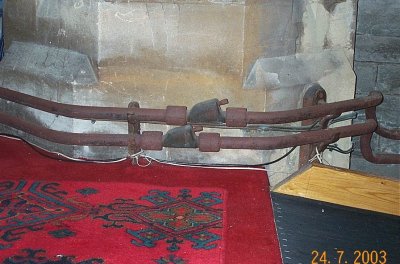
Several purpose made manual air vents have been fitted at the high points in the 5 circuits. These are similar in design as with the other Perkins heating systems found in Churches and Chapels in South Wales.


